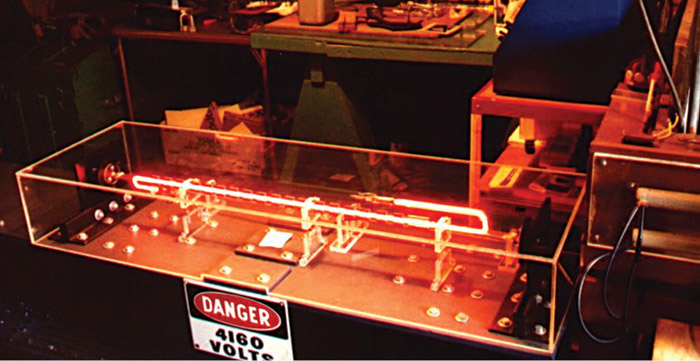


Directionality. It signifies extremely small spread of the laser beam in the direction orthogonal to the direction of travel (see Fig. 4). Technically, the beam divergence of an electromagnetic beam is an angular measure of the increase in beam diameter with distance from the optical aperture. Simply speaking, it is the extent of beam spread perpendicular to the direction of propagation of the beam. Due to the fact that the beam divergence of laser light is very small, it is unidirectional.
Intensity. Light emitted from a laser has very high intensity as compared to any other source of light (see Fig. 5). The unit of intensity is power/unit area/unit solid angle. For example, the intensity of a 1-watt laser light of average quality is 107 times higher than the intensity of a 1-watt bulb. This will give you a rough idea as to how intense a laser beam is.
Laser components
A laser consists of a gain medium inside a highly reflective optical cavity. The gain medium is a material with properties that allow it to amplify light by stimulated emission. A cavity consists of two mirrors arranged such that light bounces back and forth, each time passing through the gain medium. Typically, one of the two mirrors, the output coupler, is partially transparent. The output laser beam is emitted through this mirror as shown in Fig. 6.
Modes of laser operation
Lasers can be basically classified as operating in either continuous mode or pulsed mode, which depends on whether their power output is essentially continuous over time or it takes the form of pulses of light on one or another time scale.
Continuous mode of operation. In continuous mode of operation, the output of the laser beam is constant over time. In most cases these lasers are still termed ‘continuous-wave’ as their output power is steady when averaged over any longer time periods, with the very high-frequency power variations having little or no impact on the intended application.






